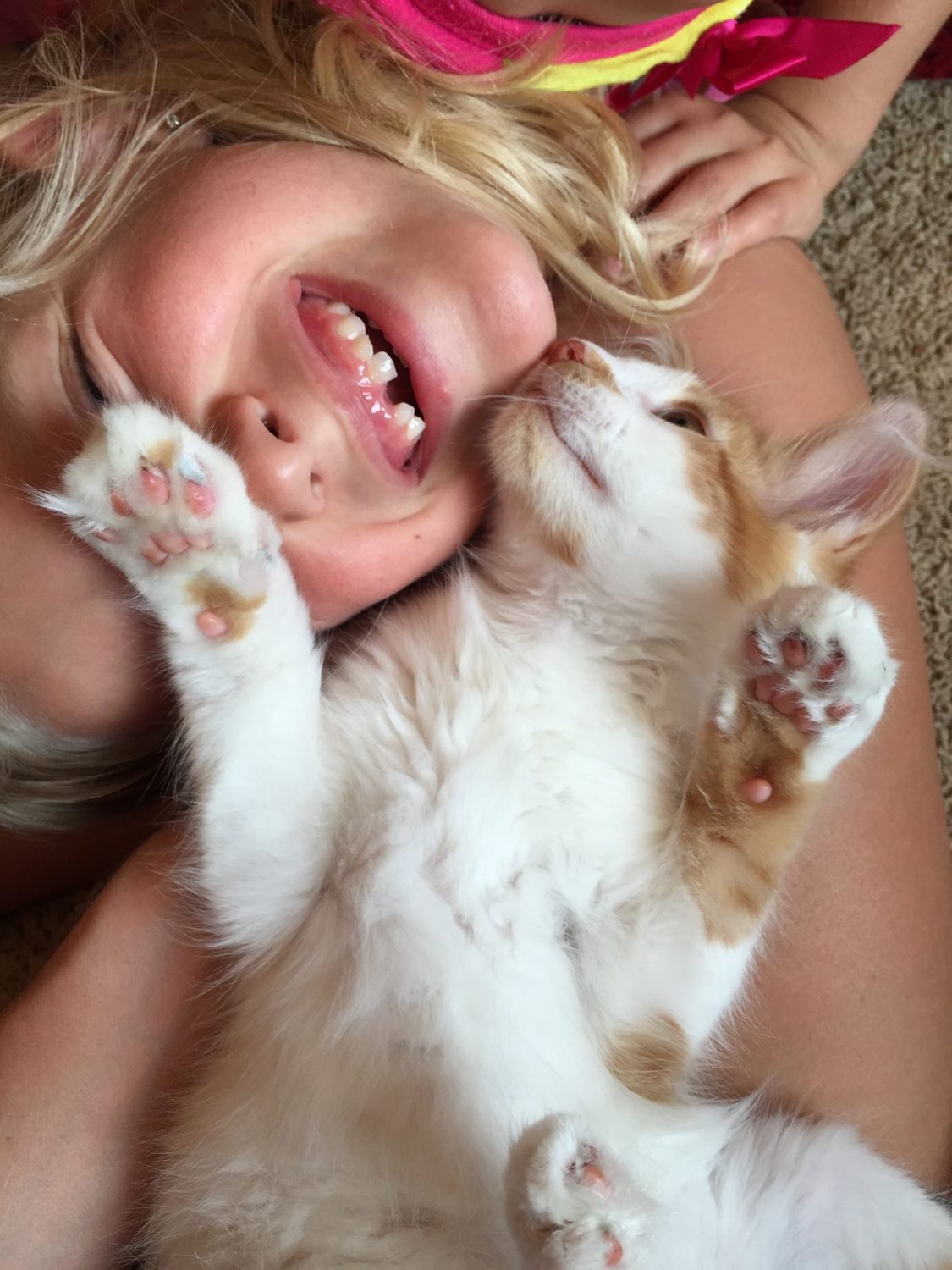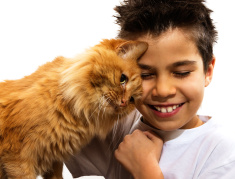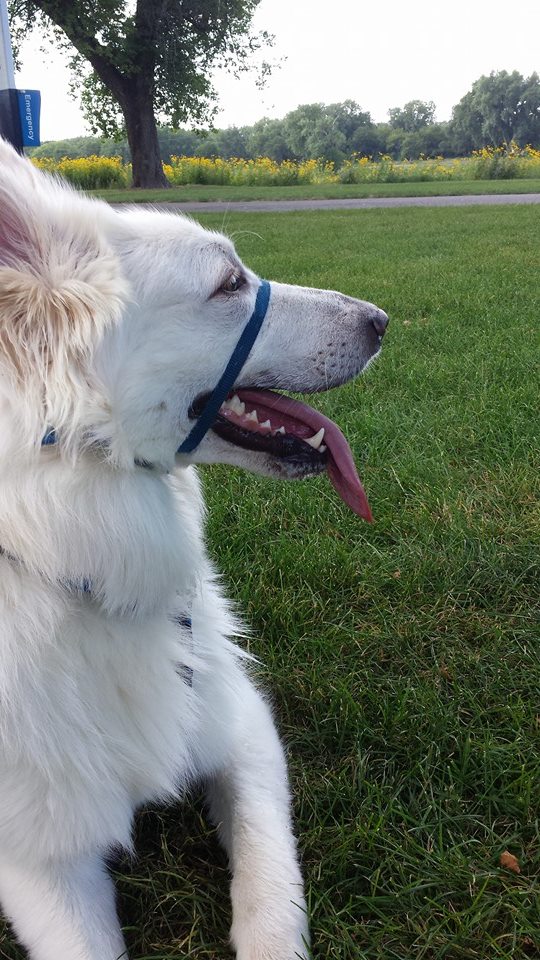Posts from April, 2016
Pets & Children: How to Properly Interact With One Another
A pet can be a very rewarding and positive experience for children. It teaches a child compassion and responsibility and they also gain a companion. Research indicates that children growing up with well-cared-for dogs have mental and emotional advantages that extend throughout life. As a parent, you must be the one to decide the appropriate time to introduce a pet to the family. This decision should be based on your child’s age, maturity, behavior and interest.
be a very rewarding and positive experience for children. It teaches a child compassion and responsibility and they also gain a companion. Research indicates that children growing up with well-cared-for dogs have mental and emotional advantages that extend throughout life. As a parent, you must be the one to decide the appropriate time to introduce a pet to the family. This decision should be based on your child’s age, maturity, behavior and interest.
No child under school age should be left alone with pet. They are not yet at the age where they understand that their actions can hurt an animal. Even older children may test the boundaries of what they can get away with when adults aren’t watching. The best thing you can do is teach both your children and your pets what is appropriate behavior.
Some things you should never allow a child to do in your home:
- Pulling on ears, feet or tail
- Poking eyes or messing with their mouth
- Swing objects toward or near a pet
- Chase the pet
- Tug or otherwise compete with the pet for toys, food or other items
- Disturb a pet while they are sleeping or eating
- Enter a private area (crate or special room) designated as a child-free zone
- Put significant weight on a pet (“ride a dog like a horse”, etc)
- Suddenly get in a pet’s face
- Touch a pet that is in pain or afraid
Here are some tips on how to properly interact with pet.
- Ask! Teach your child to ask before petting a new or unfamiliar dog. If the owner says “no”, respect their decision as it may be in everyone’s best interest and safety.
- Petting: Stroke along the neck, back and sides (avoid the face and head)
- Act Like A Tree: Teach your child not to run if approached by a strange dog, but rather stand still and stare straight ahead until the dog leaves. Running away can provoke the dog to chase and attack.
- Chores: Having a child brush the dog or cleaning out the cat litter box (wearing gloves and washing properly afterwards). This will allow your child to bond with your pet and also teaches them responsibility.
- Training: Involve your child when teaching your dog commands. This is a rewarding experience for both the pet and the child.
Children are by far the most common victims of dog bites. Most bites occur doing everyday activities and with familiar pets. If we teach our children and our pets how to properly interact with one another, we can prevent bites from happening and ensure the human-animal bond.
Infographic on How Kids Should Interact With Pets
For more information on proper ways for kids and pets to interact, visit Dr. Sophia Yin’s Webpage.
Ten Tips for Preventing Pet Behavior Problems

Getting a new pet is an exciting time for both your family and your new furry friend. Whether you have added a young kitten or a mature dog to your home, establishing rules and boundaries are important from the very first day. Here are 10 tips to help prevent behavior problems.
- Set rules immediately and stick to them.
- Avoid situations that promote inappropriate behavior.
- Observe the pet and provide what it needs to be cared for and attended to
- Supervise the new pet diligently through undivided individual attention and training, and restrict the pet’s access to a limited area of the house until training is complete.
- Encourage good behavior with praise and attention.
- Correct bad behaviors by providing positive alternatives. (A toy for a slipper, scratching post for the sofa)
- Never physically punish or force compliance to commands. This may lead to fear biting or aggression.
- Don’t play rough or encourage aggression or play biting.
- Expose pets to people, animals, and environments where you want them to live.
- See your veterinarian if serious or unresolved behavior problems exist.
Gentle Leader Headcollar: Walk Your Canine With Ease
Does your dog pull when walking on a leash? Do you have problems keeping control and end up being more exhausted by the end of the walk than your canine companion? Consider training with a Gentle Leader Headcollar to help teach your dog better leash manners.
How does a Gentle Leader Headcollar work?

The Gentle Leader Headcollar can be a great training tool for walking your pup.
The Gentle Leader headcollar has been designed to work with a dog’s natural instincts to control unwanted behavior. The nose loop encircles your dog’s muzzle so that when he tugs on the leash, it redirects his head toward you when he pulls forward. This prevents pulling and directs his attention back to you.
What are the advantages of a Gentle Leader Headcollar?
–Stops pulling on the leash. With the headcollar, you steer your dog’s nose and the body will follow. It’s very difficult for a dog to drag his handler down the street when his head is turned.
–Control. You only have to compete with the strength of a dog’s neck and head not all of the power packed in the body. This makes it easier to walk big or strong dogs.
–Safety. Unlike choke chains or prong collars, the headcollar is safe to use on puppies as young as 8 weeks old. There is very little pressure applied to the dog’s muzzle and no pressure on the throat.
–Flexibility. It can be sized to fit all dogs with an adjustable nose loop. And you have the option to convert the headcollar to a regular collar if desired.
–Comfort. The headcollar eliminates uncomfortable pressure on the throat when pulling on a standard collar. It is a positive, no-pain option for controlling a dog.
How do I acclimate my dog to the Gentle Leader Headcollar?
It’s very important that you acclimate your dog slowly to the headcollar. In the beginning, put the headcollar on him several times a day for 2-3 minutes, give him treats, throw a toy, feed him, etc while he has it on. At the end of your training period, if he is NOT struggling, take the headcollar off. Never take it off if he is struggling, because then you are rewarding for struggling.
Gradually increase the amount of time he wears it around the house and then begin putting it on at the end of your walks when he is tired. Increase the amount of time he wears it toward the end of the walk until you are actually putting it on at the beginning. If he tries to rub his nose on your leg or sweep his head through the grass, don’t let him. Lift up on the leash, and then loosen the leash and praise when he stops. Above all, make the time he has the headcollar on, FUN!
Where can I buy a Gentle Leader Headcollar?
–Animal Rescue League of Iowa, most local pet stores or online.
